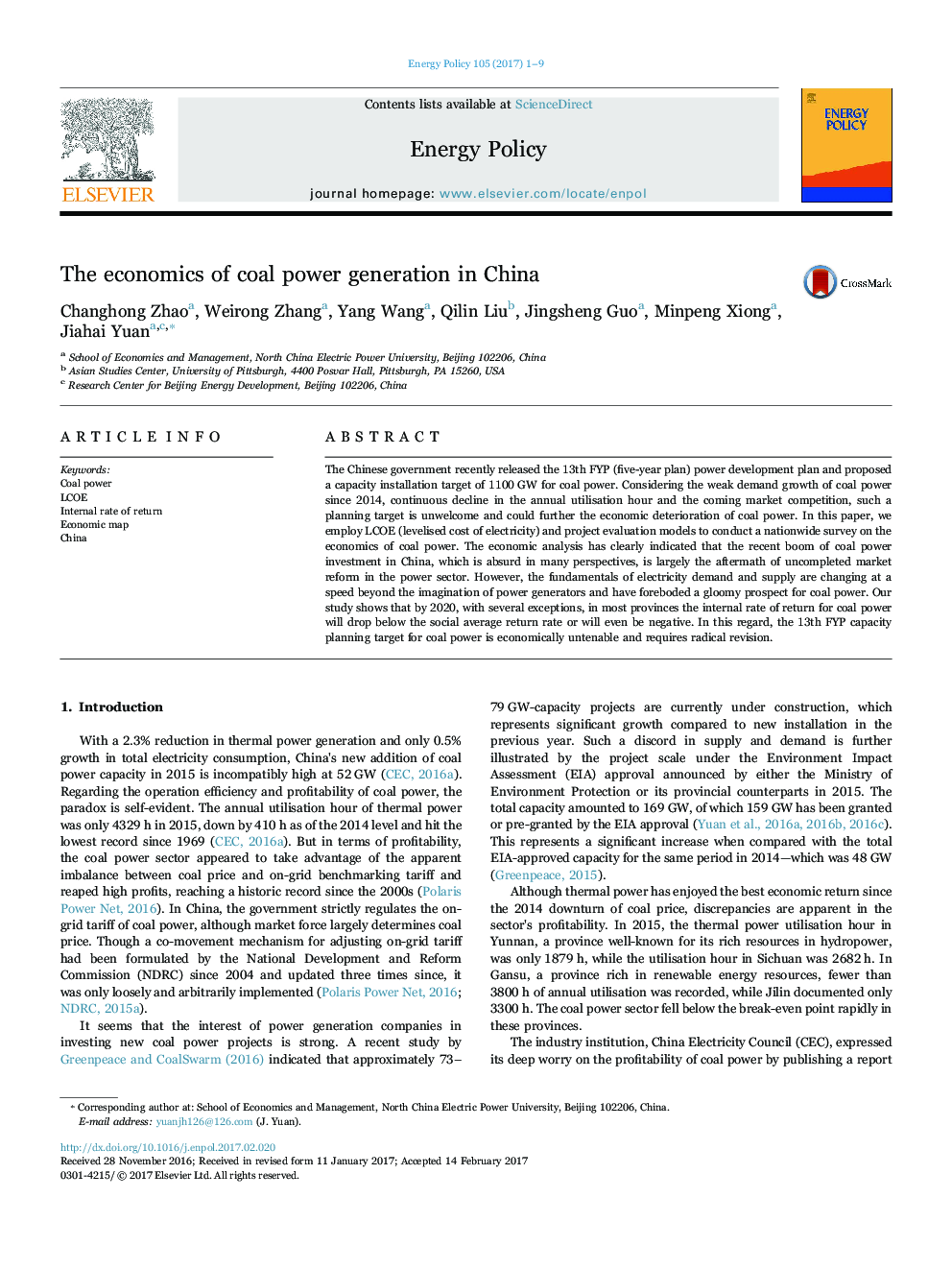| Article ID | Journal | Published Year | Pages | File Type |
|---|---|---|---|---|
| 5105911 | Energy Policy | 2017 | 9 Pages |
Abstract
The Chinese government recently released the 13th FYP (five-year plan) power development plan and proposed a capacity installation target of 1100Â GW for coal power. Considering the weak demand growth of coal power since 2014, continuous decline in the annual utilisation hour and the coming market competition, such a planning target is unwelcome and could further the economic deterioration of coal power. In this paper, we employ LCOE (levelised cost of electricity) and project evaluation models to conduct a nationwide survey on the economics of coal power. The economic analysis has clearly indicated that the recent boom of coal power investment in China, which is absurd in many perspectives, is largely the aftermath of uncompleted market reform in the power sector. However, the fundamentals of electricity demand and supply are changing at a speed beyond the imagination of power generators and have foreboded a gloomy prospect for coal power. Our study shows that by 2020, with several exceptions, in most provinces the internal rate of return for coal power will drop below the social average return rate or will even be negative. In this regard, the 13th FYP capacity planning target for coal power is economically untenable and requires radical revision.
Related Topics
Physical Sciences and Engineering
Energy
Energy Engineering and Power Technology
Authors
Changhong Zhao, Weirong Zhang, Yang Wang, Qilin Liu, Jingsheng Guo, Minpeng Xiong, Jiahai Yuan,
